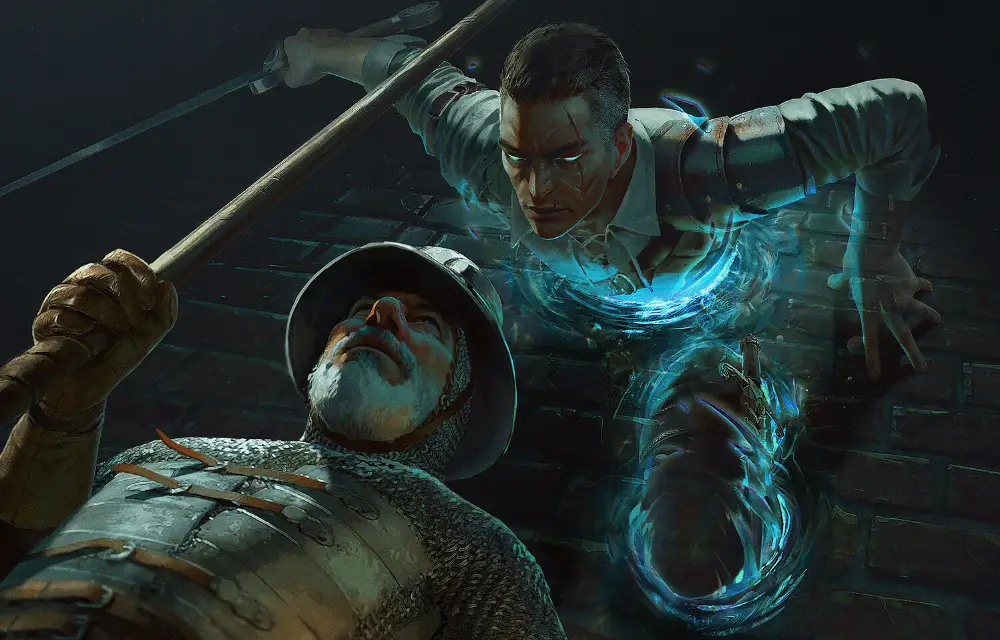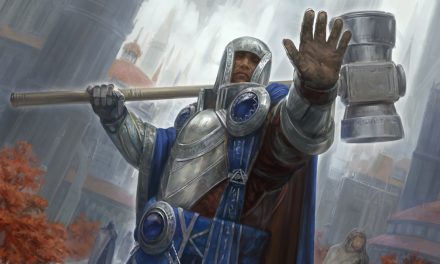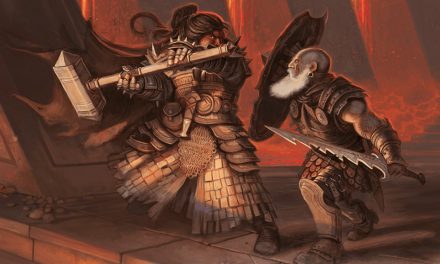The Phantom Rogue is the most macabre of the Rogue subclasses in D&D 5e, but they wouldn’t have it any other way!
Calling on spirits of the deceased for aid, the Phantom Rogue has a unique bond with death. In time, they even become like ghosts themselves.
Whether gaining knowledge from the spirits around them or using trinkets containing those spirits’ life essence, the Phantom Rogue straddles the line between life and death to dangerous effect!
Sure, it’s grim. But you can’t say it’s not effective!
In this full subclass guide, we’re covering the Phantom Rogue in D&D 5e!
What is the Phantom Rogue in D&D 5e?
The Phantom Rogue is a powerful subclass option for Rogues who want to really excel in mid-game levels.
These characters have a mystical connection with death that allows them to communicate with lingering spirits. This can be used to gain new skill proficiencies, gain knowledge, or enhance their own vitality.
However, it’s when the Phantom Rogue unleashes these spirits alongside their Sneak Attack that their foes get a whole new reason to be scared of ghosts!
The nature of this subclass’s features inclines towards a character who is evil or, at least, not necessarily good. With Phantom Rogues being more common as lieutenants for powerful necromancers and/or servants of the gods of death, it’s not surprising.
Furthermore, Phantom Rogues tend to be much more common in places like the Shadowfell and Thay which aren’t exactly known for their hospitality.
However, this doesn’t mean that a good-aligned character can’t take up the mantle of the Phantom Rogue!
Much of the flavor of this subclass comes from the spirits that your Rogue communes with, so you could easily have the spirits be more like helpful guardians than spectral prisoners.
Either way, to walk the path of a Phantom Rogue is to walk the razor-thin line between life and death.
The Phantom Rogue appears alongside the Soulknife Rogue in Tasha’s Cauldron of Everything.
Role in the Party
Choosing the Phantom Roguish Archetype at level 3 gives you a solid mix of buffs.
You gain extra skill proficiencies and increase your damage output. Additionally, you get extra utility abilities, particularly when it comes to those involving infiltration and gathering information.
Your level 9 ability, Tokens of the Departed, relies on enemies dying within 30 feet of you.
Because of this, the Phantom isn’t particularly suited to staying in the party’s backline. You’ll want to be up close and personal as much as possible or at least mid-range to get full use out of your features.
Functioning as a type of skirmisher with a ton of ghostly utility and tricks up their sleeves, Phantom Rogues are experts at taking advantage of the confusion in combat to hit their enemies where it hurts!

Phantom Rogue Features 5e
So let’s get into the good stuff: the unique features that make the Phantom Rogue archetype what it is.
Sure, they’re definitely on the macabre side, but even the most righteous of party members might look the other way when they see how much value these bring your group!
Recommended: Sneak Attack in D&D 5e
Whispers of the Dead (Level 3)
Starting at level 3, the Phantom Rogue gets their Whispers of the Dead feature.
Whenever you finish a short or long rest, you can choose one skill or tool proficiency that you lack and gain it, as a ghostly presence shares its knowledge with you.
You lose this proficiency when you use this feature to choose a different proficiency that you lack.
If your party finds itself with some gaps in their skill proficiencies, you’re able to fill that hole.
Nifty, eh?
By spending a short rest to talk with your friends on the other side, this feature can potentially be a game-changer. While nobody in your party has proficiency in knowledge of Religion, you can have a quick chat with one of your ghost friends to gain it yourself.
Who knows? That last-minute proficiency might be enough to help you uncover the secret Elven ritual that leads to a hidden treasure cache!
Being able to gain new proficiencies with a short rest means that you will usually be able to have the right skill for the job when you need it most!
Wails from the Grave (Level 3)
Extra skill and tool proficiencies not enough?
No fear! Have a swanky upgrade to your Sneak Attack!
Immediately after you deal your Sneak Attack damage to a creature on your turn, you can target a second creature that you can see within 30 feet of the first creature.
Roll half the number of Sneak Attack dice for your level (round up), and the second creature takes necrotic damage equal to the roll’s total, as wails of the dead sound around them for a moment.
You can use this feature a number of times equal to your proficiency bonus, and you regain all expended uses when you finish a long rest.
Being able to throw some extra damage to other enemies is very handy. It’s particularly useful that the feature’s range is 30 feet from your target. This means that you can still use the ability if you’re attacking from a short distance with a crossbow, bow, or other such ranged weapon.
The best part of this feature, however, is how well it scales.
At level 3, your Sneak attack damage is an extra 2d6 on top of your weapon’s damage. That means that Wails From the Grave is adding an extra 1d6 damage to a secondary enemy.
At low levels, it’s a so-so ability. Every little bit helps, but you probably won’t be jumping for joy over the extra 4 damage. But the damage increases in a hurry as you level up and gain more dice for your Sneak Attack damage.
Considering the nature of action economy in D&D 5e, it’s pretty rare that you’ll be fighting just a single enemy, so you can expect to get a lot of use out of this feature!
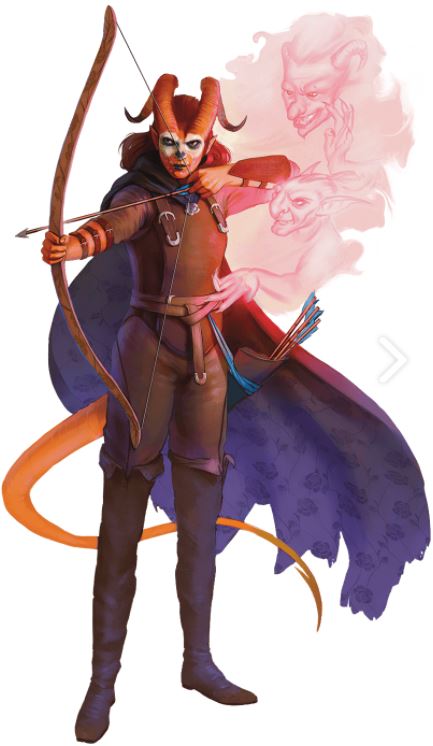
Tokens of the Departed (Level 9)
Level 9 is where the Phantom Rogue really hits their stride. Not only is your Sneak Attack dealing 5d6 damage (which means your Wails From the Grave is dealing a respectable 3d6), but you also gain the next key feature for the Phantom archetype.
With Tokens of the Departed, you use your reaction to steal a sliver of life essence from a creature that expires within 30 feet of you. This essence takes the form of a trinket (determined by the DM or rolled on the Trinkets table of the Player’s Handbook) and appears in your hand.
You can have a number of these trinkets in your possession equal to your proficiency bonus. So you can hold 4 trinkets at level 9, 5 at level 13, and 6 at level 17.
You shouldn’t have too much difficulty keeping stocked on these soul trinkets. Just make sure that you don’t get overexcited and use your reaction in a situation where you might have needed it for your Uncanny Dodge or possibly for an opportunity attack instead!
Soul Trinket Options
Soul Trinkets have three distinct uses:
- While you have a soul trinket on your person, you have advantage on death saving throws and Constitution saving throws.
- When you deal Sneak Attack damage on your turn, you can destroy one of the soul trinkets on your person to immediately use Wails from the Grave without expending a use of that ability.
- As an action, you can destroy a soul trinket no matter where it’s located. When you do so, the spirit appears and will answer a single question that you have for it.
First things first, you will want to make sure that you always have at least one soul trinket on your person.
Effects that require Constitution saves are usually very nasty and death saving throws are always tense. Having advantage on both of these is an incredible bonus.
With the second option for soul trinkets, you can dish out more damage by using your Wails From the Grave ability more. If you’re diligent in recovering soul trinkets during combat, this means that you’ll always have Wails From the Grave handy.
Finally, we have the third soul trinket ability. Being able to ask questions of the spirits can be useful, but you have to be aware of the limitations of this ability.
The spirit only knows the languages that it knew in life and it is not obliged to answer your question truthfully. The spirit will answer quickly so that it can be freed.
This can be useful for gaining information about an enemy’s base, plans, or motivations. I mean, talking with the dead is pretty much the ultimate form of recon!
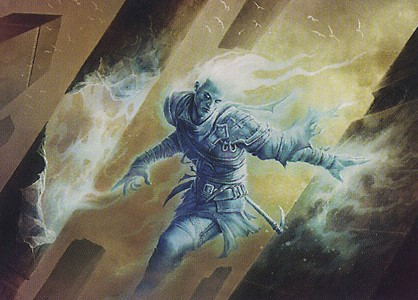
Parleying with Spirits – A Suggestion
For Dungeon Masters, I would recommend allowing the Phantom to quickly parley with the spirit when using their third Soul Trinket ability option.
The spirits probably aren’t happy about being dead (especially if the Phantom was the one who did them in), but having every spirit be disagreeable or deceitful really ruins the appeal of this feature.
Some spirits may just want to be understood or might figure that a quick and truthful answer is the fastest way to finding their eternal rest. Others might have a chip on their shoulder, but that opens up roleplaying opportunities rather than just invalidating an entire ability.
Adding in a Persuasion and/or Insight check adds depth to this ability while also rewarding the Phantom who has also put some points in their Charisma skills.
The DC can vary depending on what spirit is being talked to. The spirit of the Boss might relish one last opportunity to mislead the party, but a regular mercenary might have no such motivations.
You might also consider how long the spirit has been stored in the token.
A few hours after their spirit is stored, the Boss creature is still fuming. It might take a DC 20 Persuasion check to get them to work with the party. If they’ve been trapped for months, they might be more desperate to be freed. It might only be a DC 10 in such a situation or possibly won’t even require a check!
If the spirit can be reasoned with, this becomes even more fun for the player. If the spirit remains disagreeable, at least the player had a reasonable chance of successfully conversing with it. Because of that, they are unlikely to write off the feature altogether.
Recommended: Complete Guide to the Rogue in D&D 5e
Ghost Walk (Level 13)
At level 13, the Phantom Rogue is better able to blur the line between the realms of the living and the dead.
As a bonus action, you assume a spectral form.
While in this form, you have a flying speed of 10 feet, you can hover, and attack rolls have disadvantage against you. You can also move through creatures and objects as if they were difficult terrain, but you take 1d10 force damage if you end your turn inside a creature or an object.
You stay in this form for 10 minutes or until you end it as a bonus action. To use this feature again, you must finish a long rest or destroy one of your soul trinkets as part of the bonus action you use to activate Ghost Walk.
With the Ghost Walk ability, the Phantom can use a bonus action to assume a spectral form. In this form, they have a flying speed of 10ft, can hover, and attack rolls against them are made at disadvantage.
Even beyond the obvious utility of being able to pass through walls, this is also a fantastic defensive feature.
For 10 whole minutes, all attacks against you are at disadvantage! While magical weapons are typically useful for overcoming ghosts’ resistances, that doesn’t matter to the Phantom! Magic weapon or not, the attack is at disadvantage!
The flying speed is a nice little cherry on top.
Typically, spells like Fly are useful for the mobility that they grant the targets. While 10 feet is a rather slow speed, it’s enough to get you through walls and/or out of trouble in a pinch.
Death’s Friend (Level 17)
The last of the Phantom Rogue’s abilities is gained at level 17.
As it just so happens, the benefits of becoming Death’s Friend are simple but very useful!
When you use your Wails From the Grave, you can deal the necrotic damage to both the first and the second creature.
At the end of a long rest, a soul trinket appears in your hand if you don’t have any soul trinkets, as the spirits of the dead are drawn to you.
First, the necrotic damage from your Wails From the Grave feature now gets dealt to both of the creatures that you choose. Particularly for the one that you hit with the Sneak Attack to activate Wails From the Grave, this is going to hurt!
The second benefit of this feature is that the spirits of the dead are now drawn to you.
At the end of a long rest, you gain a soul trinket if you didn’t already have one on you. Unless you’ve burned through all of your soul trinkets, you’ll never make a death or Constitution saving throw without disadvantage again!
I can’t help but chuckle at the idea that this trinket is just some completely random person who happened to die while you were sleeping. Their spirit found you and is now going to hang out until you decide to use the trinket.
While Death’s Friend isn’t an earth-shattering ability, it’s a perfect capstone feature that does well in buffing the rest of the Phantom Rogue’s kit to this point.
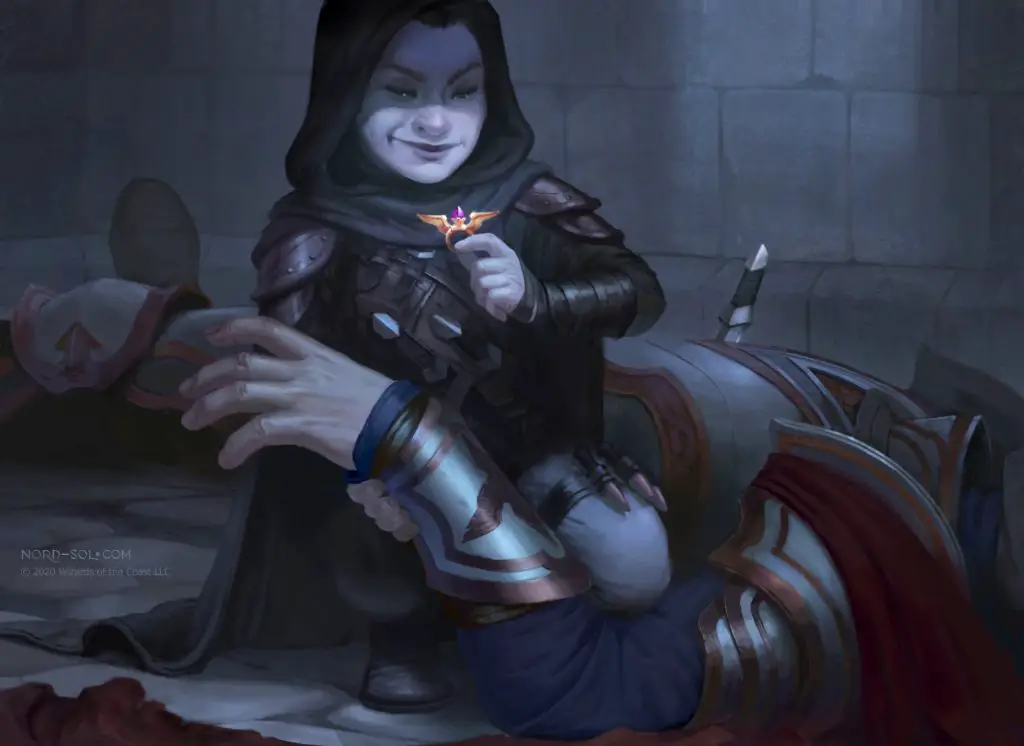
Connections
So we already touched on a couple of ways that a Phantom Rogue may be connected to your game’s world.
Such talents aren’t uncommon in societies where necromancy is studied or revered. Additionally, the Shadar-Kai of the Shadowfell are masters of these dark talents.
But these origins can be somewhat difficult to tie in with the party. Most parties are inclined towards “good” and the macabre machinations of the Phantom Rogue would certainly raise some eyebrows.
To distance the Phantom from the dark side, you’ll want to consider a few things.
How did they learn these techniques? Do they attempt to hide these abilities from their comrades?
It’s possible that they learned the techniques by rising in the ranks of a Thieves Guild.
Perhaps the guild leadership reveres a god of death? Maybe these techniques were taught to the guild’s founder long ago and have since been passed down through the generations? The character may not know (or care) about the darker origins of the techniques and views them as a means to an end.
As I mentioned in my Top 10 Subclasses in Tasha’s Cauldron of Everything, this is the class that I was most excited to play when that book was released. And I had an absolute blast!
In that campaign, I found myself loosely basing my character’s Phantom abilities on Klaus from The Umbrella Academy. He doesn’t fully understand how they work and is trying to learn to live with them. Regardless, they are useful for getting him out of (and into…) trouble!
It added some very interesting elements to our game as the character was learning to use his “curse” for the benefit of himself and those he cares about.

Of course, there’s also the major opportunity here for a near-death experience that left the Phantom Rogue changed. The brush was so close that they gained the attention of death itself.
The problem? Death still hasn’t looked away…
Whether that’s a good or bad thing remains to be discovered…
Is the Phantom Rogue Good in D&D 5e?
The Phantom Rogue is definitely a subclass worth playing if your game will be reaching the middle levels.
It takes a while for this subclass to build traction as its features all largely scaffold on top of each other. I’m not going to sugarcoat it: it’s a bit of a grind for the first several levels.
Your first major leap forward comes at level 9 when you gain your Tokens of the Departed ability. After that, level 13 is your next big power leap with the Ghost Walk ability.
At lower levels, Whispers of the Dead gives you some general skill utility and Wails From the Grave throws out some extra damage. But there’s nothing particularly shiny or mind-blowing about this subclass in those lower levels. The hardest limitation at the early levels is that you can only use Wails From the Grave 2-3 times per long rest until you can start collecting your soul trinkets.
Once you hit level 9 though, all bets are off. The Phantom Rogue becomes an absolute beast that offers a ton of value to the party. More uses of (and more damage from) Wails From the Grave helps you pile on the hurt while also keeping utility options open.
If you don’t plan on your campaign spending a fair amount of time at level 9 or beyond, you might enjoy playing something else like an Arcane Trickster or a Swashbuckler instead. Those subclasses get defining features at earlier levels that would be more ideal for early-level campaigns that aren’t expected to get to the higher levels.
But if mid-level play is going to happen though, the Phantom Rogue is definitely worth playing!
Related: Ranking Every Rogue Subclass in D&D 5e
Conclusion – The Phantom Rogue in D&D 5e Guide
Whether you’re drawn to the macabre, enjoy finding creative solutions to problems, or both, the Phantom is a solid Rogue subclass worth considering.
While this subclass suffers a bit in the early game, it’s rarely an issue that the party can’t deal with. (See: all early-level Wizards.) When the Phantom gets the ability to use their soul trinkets, the gloves come off!
I’m a sucker for class options that blend thematic flavor with unique mechanics that complement the base class’s features. In that regard, this subclass definitely stands out!
Do you have a character concept for a Phantom Rogue that you’d like to share? Got any questions I can help with? Let’s chat in the comments!
Also sign up for the Tabletop Joab newsletter to get updates on all of the happenings as we release more content!
Until next time, stay creepy you dastardly Phantoms you!

